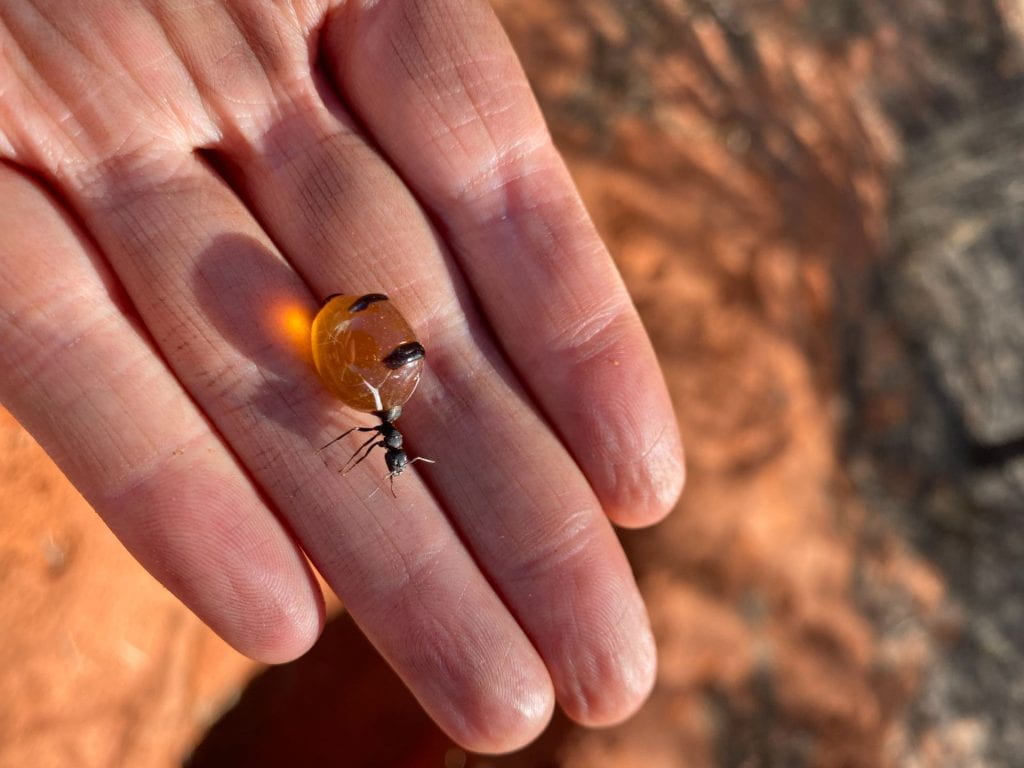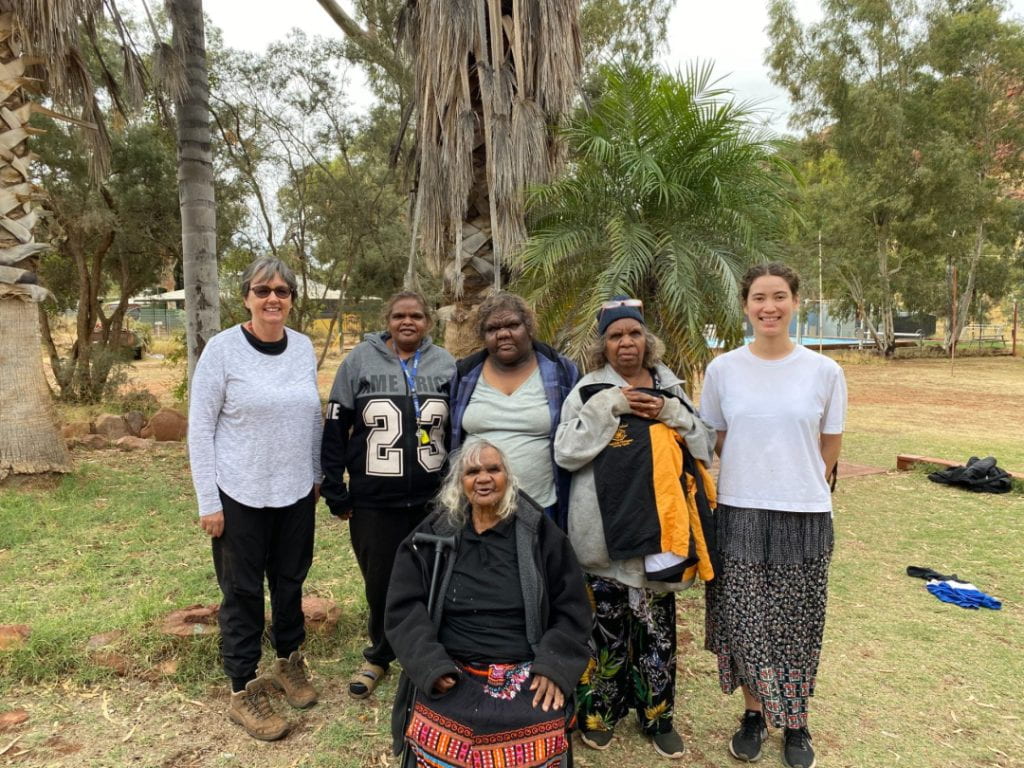
Graduate Researcher Series: an interview with Sasha Wilmoth
Sasha Wilmoth is a PhD candidate in Linguistics at the University of Melbourne, part of the Research Unit for Indigenous Languages (RUIL), and the ARC Centre of Excellence for the Dynamics of Language (CoEDL). Her main research interests include the description and documentation of Australian Aboriginal languages; linguistic typology; morphology and syntax; variation and change. Her doctoral project investigates Pitjantjatjara, an Aboriginal language spoken at Pukatja (Ernabella) in the Anangu Pitjantjatjara Yankunytjatjara Lands in South Australia.
Niles interviewed Sasha about her doctoral research and interesting experiences during her PhD journey.
***
Can you tell us about your doctoral project?
I’m working on documenting Pitjantjatjara, which is a central Australian Aboriginal language and I’m interested in young people’s language and language change. It’s a strong language that’s still spoken every day and still learned by children as a first language. I first started becoming interested in how the language might be changing due to pressure from English. As I got into the project, I also discovered there were some really interesting and complex parts of the grammar that weren’t changing that much or in a different way than I expected. So, my project is a mix of looking at variation as well as describing different parts of the grammar.
***
How did you come to this research topic?
I was always really interested in Aboriginal languages during my undergrad and my Honours thesis was on Murrinh-Patha. After I finished Honours, I did a summer research project with Felicity Meakins at the University of Queensland working on her corpus of Gurindji Kriol. She’s been working with Gurindji people for a long time, documenting how their language has been changing and so that was how I got interested in using a corpus to understand language change quantitatively. Then I got a job working for a company called Appen and I learned a whole bunch of computational skills. I kept working with some CoEDL researchers on the side and eventually decided that I’d like to try out my own research project. I thought I would like to look at a language that’s very strong and spoken by young people, which unfortunately narrows it down quite a lot. I met with Rachel Nordlinger, my supervisor, and she suggested that I could team up with Rebecca Defina who was a postdoc at the time. Rebecca has been working on children’s acquisition of Pitjantjatjara. So, I decided that would be a good option and she introduced me to people. I also realized there hasn’t been that much research on Pitjantjatjara since the 1980s and 1990s even though it’s a very strong language.
***
I wonder if there are any interesting findings that you’ve discovered so far.
The area where I found the most change between younger speakers and older speakers is in phonology. A lot of ways that young people pronounce things are different from how older people speak and from what’s been documented before. At first, I found it really hard to understand younger people because of all these phonological changes and there’s a huge number of them. Then there were some things that I expected would be changing based on what people have said before, like I thought that young people would be changing to a more English-like system of expressing possession. I have about 800 examples of possession in my corpus and I was able to pull those out and actually analyse the data quantitatively. It turns out there’s no sign that Pitjantjatjara is changing towards a more English-like system. So that’s something I didn’t expect. Even though there’s variation, it’s not actually changing. It’s a variation that I argue has been in the language for a long time. It’s not a sign of language becoming weaker or anything like that. That was sort of a surprising finding for me.
***
Since you are towards the end of the PhD, what do you envision as the next step in your career?
Alongside the PhD, I’ve also been working with my supervisor Rachel and psycholinguists on a project about sentence planning in free word order languages. They’ve been looking at sentence planning and production in these languages and using eye tracking to see how speakers of typologically different languages plan sentences. So hopefully I will continue to work on that project.
***
What it is like to work at RUIL and CoEDL?
It’s a really nice collaborative department. There are so many of us that work on different Australian languages and different aspects of these languages. There’s always some expertise on any topic. I can just tap someone on the shoulder and ask for some advice or find common interests. There are lots of brilliant people and really exciting research that’s happening.
***

What is the most memorable event that you have experienced in your fieldwork?
On the last day of my most recent trip, my friend called me up and said, ‘You’re going. We should take you out and we’ll try honey ants.’ A bunch of us went out to her father’s homeland and they showed me this incredibly skilful procedure for digging up honey ants. It’s a type of ant that stores nectar in its bum. It’s really hard work getting it out and they had heaps that they gave to me. The flavour is absolutely incredible. That was a really beautiful and special thing, and a really generous gesture. Everyone’s been really welcoming and really generous with me when I was there. It’s been a huge privilege to learn from Aṉangu and for the most part people have been very eager to teach me about their language and their culture.
***

Sasha with staff of Areyonga School. From left to right: Leanne Goldsworthy, Lucinda Nipper, Rachel Tjukintja, Tarna Andrews, Sasha Wilmoth; in the front: Daphne Puntjina. Photo by Sasha
Are there any other experiences that you’d like to share with our readers?
Recently I was also working at the school in Areyonga as a consultant to work on their bilingual program. It was very rewarding to put some of my linguistic knowledge into practice. I was mostly working on first language literacy, adapting materials and producing new materials and activities for the kids and helping the Aboriginal teaching staff as well. There’s a committee of elders that advise the school and work with the school, so I also facilitated curriculum planning such as what sort of cultural knowledge they want to have taught in the school, what activities they want for each topic, and what order should that be taught in. It was very cool to be able to use my language skills in such a practical way.